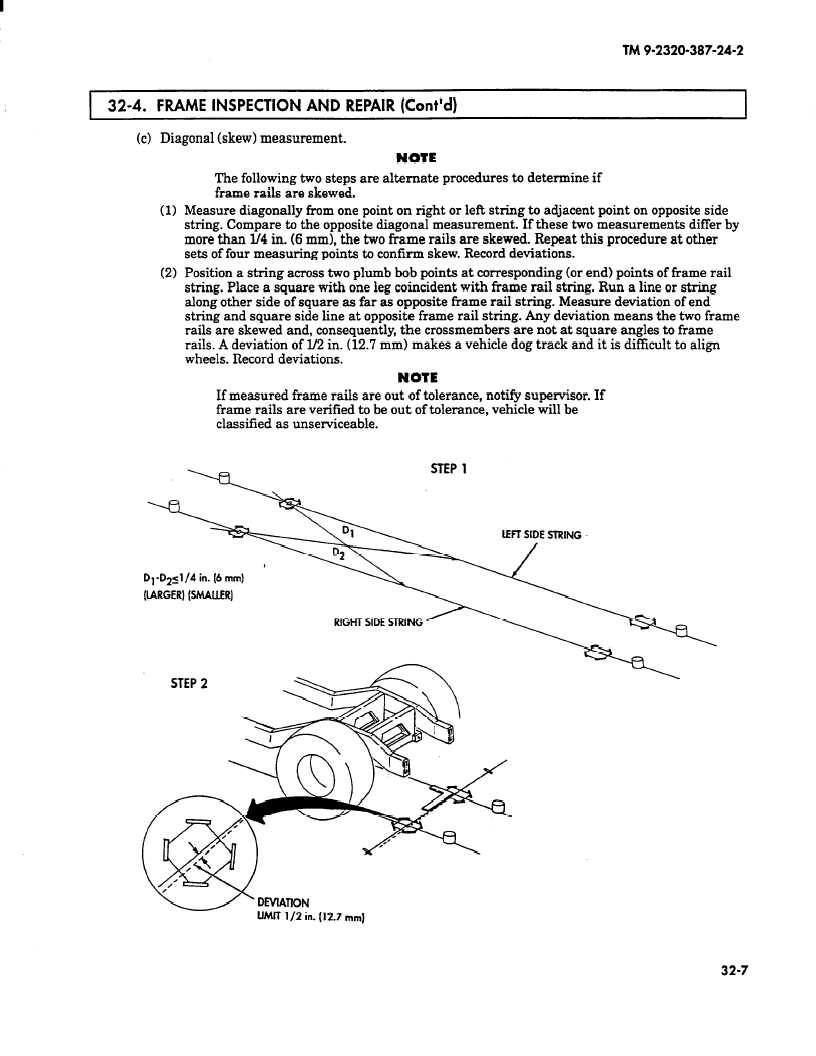TM 9-2320-387-24-2
32-4. FRAME INSPECTION AND REPAIR (Cont’d)
(cl Diagonal (skew) measurement.
(1)
(2)
NOTE
The following two steps are alternate procedures to determine if
frame rails are skewed.
Measure diagonally from one point on right or left string to adjacent point on opposite side
string. Compare to the opposite diagonal measurement. If these two measurements differ by
more than l/4 in. (6 mm), the two frame rails are skewed. Repeat this procedure at other
sets of four measuring points to confirm skew. Record deviations.
Position a string across two plumb bob points at corresponding (or end) points of frame rail
string. Place a square with one leg coincident with frame rail string. Run a line or string
along other side of square as far as opposite frame rail string. Measure deviation of end
string and square side line at opposite frame rail string. Any deviation means the two frame
rails are skewed and, consequently, the crossmembers are not at square angles to frame
rails. A deviation of l/2 in. (12.7 mm) makes a vehicle dog track and it is difficult to align
wheels. Record deviations.
NOTE
If measured frame rails are out of tolerance, notify supervisor. If
frame rails are verified to be out of tolerance, vehicle will be
classified as unserviceable.
STEP 1
LEFT SIDE STRING
Dl -D2<1/4 in. (6 mm)
(LARGER) (SMAUER]
RIGHT SIDE STRING \
UK
DEVIATION
LIMIT l/2 in. (12.7 mm)
32-7

